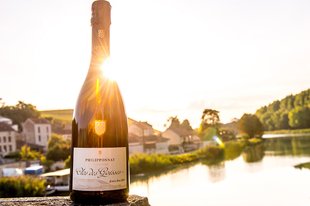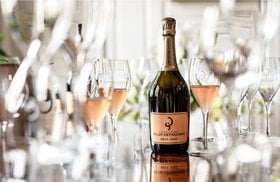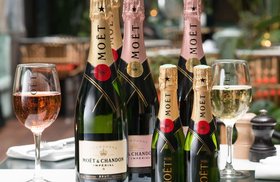Philipponnat Champagne (Winemaking, Best Wines 2025)
Want to discover all about Philipponnat Champagne before adding one to your collection?
Philipponnat’s rich history dates back to 1522 when its wines graced the tables of nobles and rulers like King Louis XIV. It is best known for its Clos des Goisses wine, which in the 1930s was the world’s first single vineyard Champagne.
Let’s explore more about Philipponnat Champagne, including its fascinating history, vineyards, and The Best Bottles To Buy In 2024. We’ll also discover the Easiest Way To Invest In Philipponnat And Other Fine Wines.
Further reading
- Interested in expanding your wine collection? Check out this handy Guide On Investing In Wine.
- Also, discover the secrets of legendary German winemaker JJ Prum or Napa Valley pioneer Robert Mondavi.
A Quick Look into the Philipponnat Champagne House

Philipponnat is located in the town of Mareuil-Sur-Ay in the Vallée de la Marne area of Champagne, France.
The Champagne house owns 20 hectares of vineyards consisting of Chardonnay, Pinot Meunier, and Pinot Noir grape varieties. Its most revered vineyard is the 5.5 hectare Clos des Goisses vineyard in the heart of the Champagne region.
The History of Philipponnat
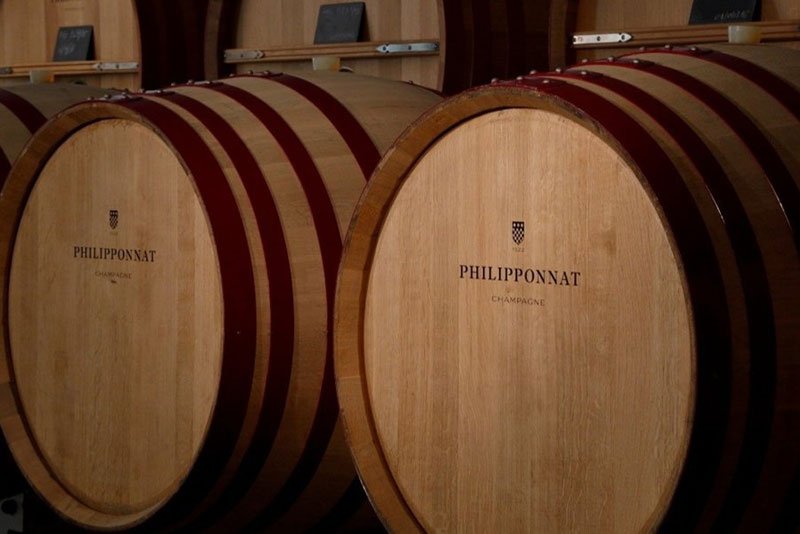
This iconic Champagne house was founded by Apvril le Philipponnat in 1522. The wine house is older than its famous counterparts - Krug and Laurent-Perrier, which were both established in the 1800s.
The Philipponnat family soon became wine merchants to French aristocrats and royals - thanks to its proximity to Reims, a popular hub for art and culture.
Philipponnat has always been a pioneer winery - they were the first Champagne house to include the main vintage, dosage, and disgorgement dates on the label.
In the 1930s, it was known mainly for its Clos des Goisses Champagne, but over the years, its portfolio of outstanding wines has grown significantly.
Since 1999, the Champagne house has been under the direction of Charles Philipponnat. Charles learned the tricks of the trade from his father, Rene, who was chef de caves at Moet & Chandon and spearheaded its most heralded vintages like the 1961 Dom Perignon.
Viticulture at Philipponnat

Philipponnat’s vineyards are situated near the winery in the Mareuil-Sur-Ay commune and the Grand Cru village of Ay in the Champagne region. They are:
- Le Léon
- La Remissonne
- Les Cintres
- Clos des Goisses
Of these, the most famous vineyard is Clos des Goisses (“Goisses” is an old Champagne dialect word for a very steep slope.)
This 5.5 hectare vineyard is made up of 14 parcels of solid belemnite chalk and rendzina subsoil (a chalk debris that freezes in winter.) The steep south-facing slope ensures that each vine receives direct sunshine throughout the day. This prolonged sun exposure contributes to the ripeness and intensity of the grapes.
So, how are Philipponnat Champagne wines made?
Making Champagne at Philipponnat
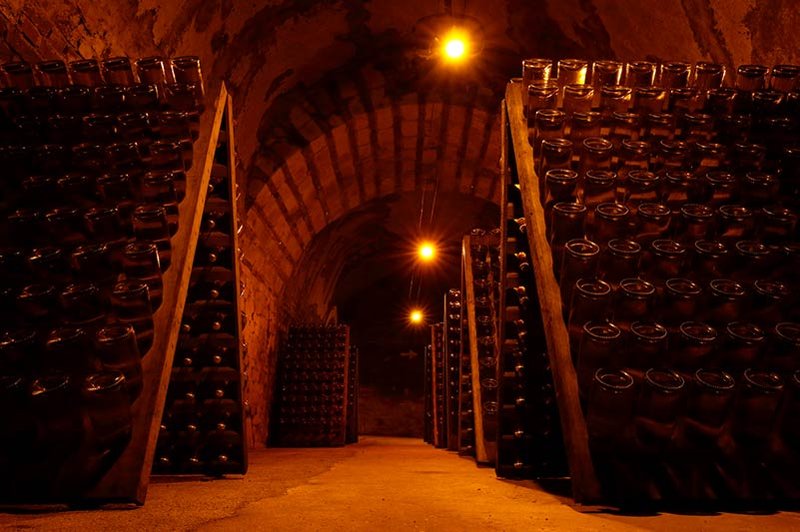
Winemakers at Philipponnat follow traditional techniques and a slow vinification process. These are the typical steps they follow:
- Harvesting: Philipponnat uses mainly and small amounts of Chardonnay and Pinot Meunier grapes from their Premier and Grand Cru vineyards. Winemakers here prefer later grape harvests than other Champagne producers. They hand-pick each grape and use only the first-press juice.
- Fermentation: Philipponnat doesn't use a specific fermentation method for all wines but adapts according to the needs of each vintage.
Unlike other Champagne producers, Philipponnat winemakers are cautious when conducting oak barrel fermentation. They prefer to ferment a portion of their wine in casks, which is unusual for Champagne wines.
The Philipponnat Champagne wine undergoes partial non malolactic fermentation to preserve its freshness.
- Aging: The Philipponnat vintage cuvees are aged for 5-11 years on lees. The non vintage Champagne is aged for three years.
Since taking over, Charles Philipponnat has slowly transitioned to neutral wood aging to intensify the wine’s flavor.
Next, let’s see the different Philipponnat Champagne wines.
Philipponnat Champagne Styles
The Philipponnat collection of Champagnes includes:
1. Clos des Goisses

Clos des Goisses vintages come from grapes originating in the renowned Clos des Goisses vineyard. The grapes receive no shade, resulting in concentrated and intense Champagnes.
This sparkling wine is produced in limited quantities (20,000 bottles annually), making it highly sought-after.
The Champagnes in this collection are
- Clos des Goisses
- Clos des Goisses Juste Rosé
2. Royale Reserve
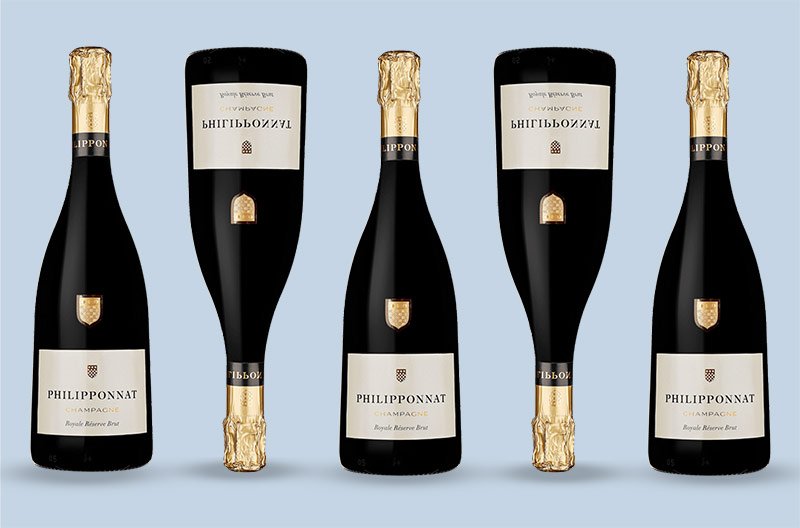
This Champagne is produced mainly from the first-pressed Pinot Noir grapes from the best Grand Cru vineyards.
This reserve wine is aged in casks using the solera system - a method in which winemakers gradually blend multiple vintages of wine. This evens out the vintage variation of the non vintage blends.
Winemakers at Philipponnat blend their reserve wine annually to make it more complex and avoid the loss of minerality.
The Champagne wines in this collection are:
- Royale Reserve Brut
- Royale Reserve Non Dose
- Royale Reserve Rose
3. Vintage Cuvees
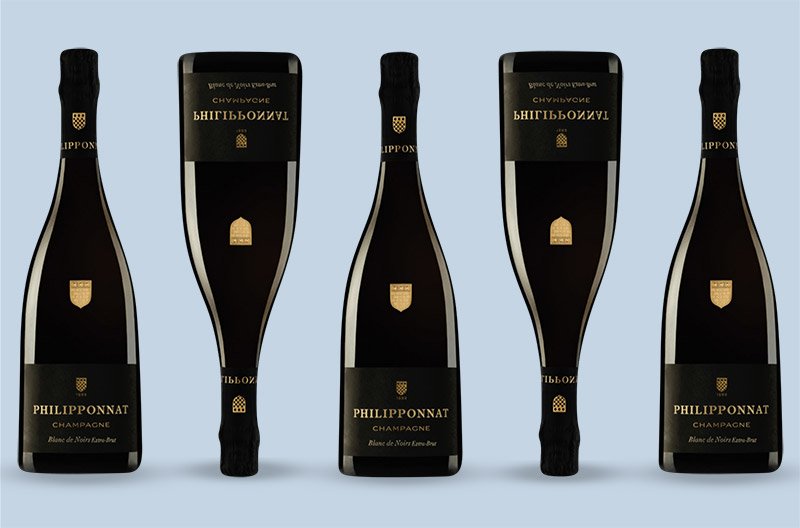
Philipponnat makes these Champagnes from a selection of Pinot Noir, Chardonnay, and Pinot Meunier grapes from a single harvest. The vintage cuvee is a blend of various wines vinified in wooden barrels with no malolactic fermentation.
Extended aging on lees in bottles for six years adds to its deep flavor.
The Champagnes in this collection are:
- Blanc de Noirs (Vintage Cuvee)
- Grand Blanc (Vintage Cuvee)
- Blanc de Blancs (Grand Blanc Brut)
- Sublime Reserve Sec (Vintage Cuvee)
4. Cuvee 1522

The winemakers named this wine in honor of the year the Philipponnat family settled in Ay.
Philipponnat makes this Champagne from the best Grand Cru vintages, vinified in wooden casks with no malolactic fermentation. This Champagne is aged for 6-8 years resulting in a subtle and balanced wine.
The Champagnes in this collection are:
- Cuvee 1522
- Cuvee 1522 Rose
5. Single Plot Cuvees

Philipponnat makes these cuvees from the Pinot Noir grape variety grown in its Premier and Grand Cru sites and cellars them for at least seven years. This bright and balanced single-plot prestige cuvees are made only in small quantities.
The Champagnes in this collection are:
- Le Leon
- La Remissonne
- Les Cintres
Wondering which of these Philipponnat Champagnes to add to your wine collection?
10 Best Philipponnat Champagnes to Buy in 2024
Here are our top Philipponnat picks:
1. Philipponnat Clos des Goisses L.V. Extra Brut, 1994
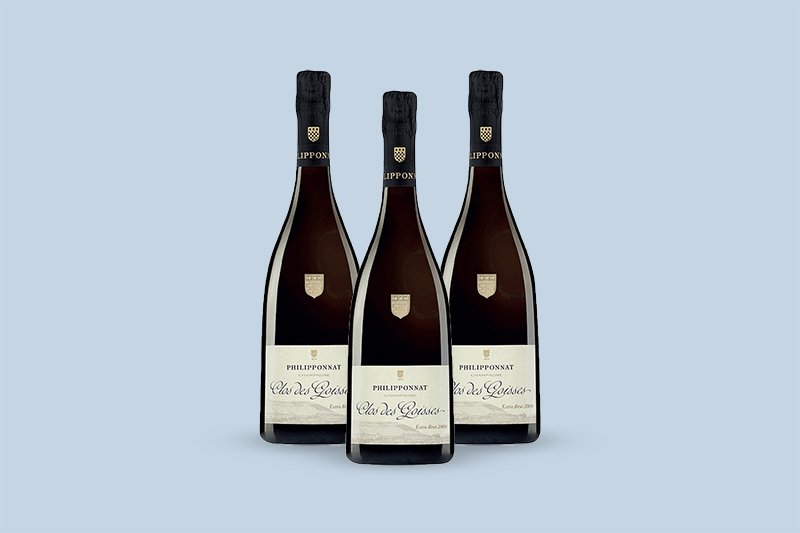
With this world-class sparkling wine, Philipponnat achieved a delicate balance of creaminess and acidity. This Pinot Noir and Chardonnay blend is elegant and fruity with notes of ripe grape and stone fruit.
The terroir imparts subtle minerality to this impressive wine. It has a long finish and goes well with white meat and seafood dishes.
Price of Philipponnat Clos des Goisses L.V. Extra Brut, 1994: $834
2. Philipponnat Les Cintres Extra Brut, 2008
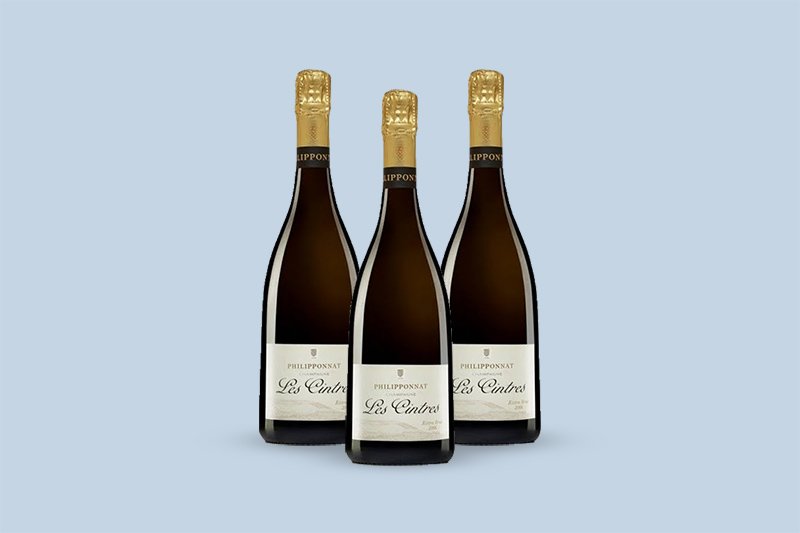
2008 was an excellent vintage for Champagne, and this particular one is highly sought-after because Philipponnat only made 2,187 bottles.
This elegant wine is pure and rounded on the palate with toasted bread and tobacco notes. It has an elegant freshness and a long, salty finish.
Price of Philipponnat Les Cintres Extra Brut, 2008: $427
3. Philipponnat Clos des Goisses Juste Rosé, 2000
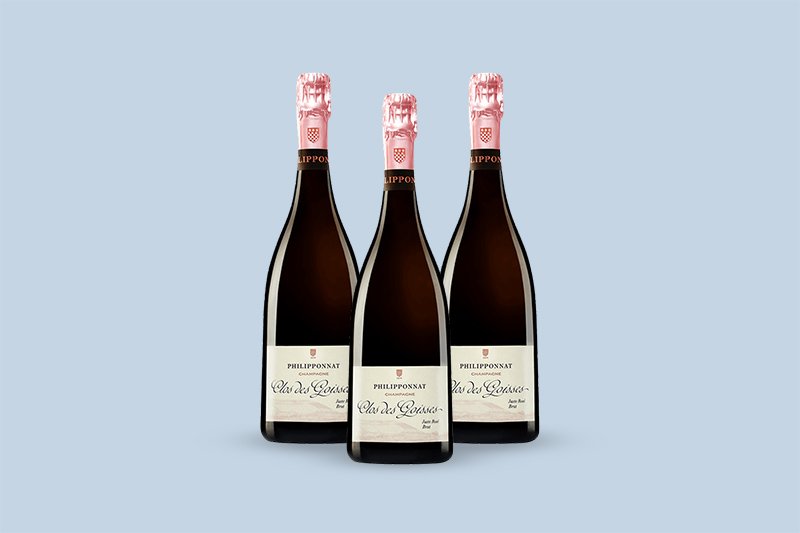
Here we have a tart wine with subtle sweetness and acidity. It has an intense and exotic fruit nose with tangerine, redcurrant, and apricot tones. This delicious Champagne is dry and crisp with a mineral palate and a long finish.
Price of Philipponnat Clos des Goisses Juste Rosé, 2000: $385
4. Philipponnat Clos des Goisses Extra Brut, 2019
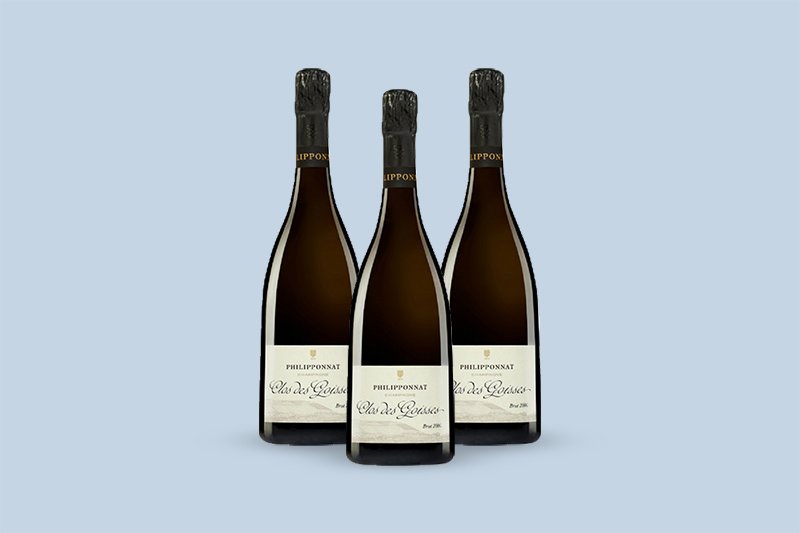
This is a bold and acidic sparkling wine. The initial almond, grilled nut, and brioche notes give way to a green apple and peach palate with a long citrus ending.
Price of Philipponnat Clos des Goisses Extra Brut, 2019: $1695
5. Philipponnat Le Leon Grand Cru Extra Brut, 2006
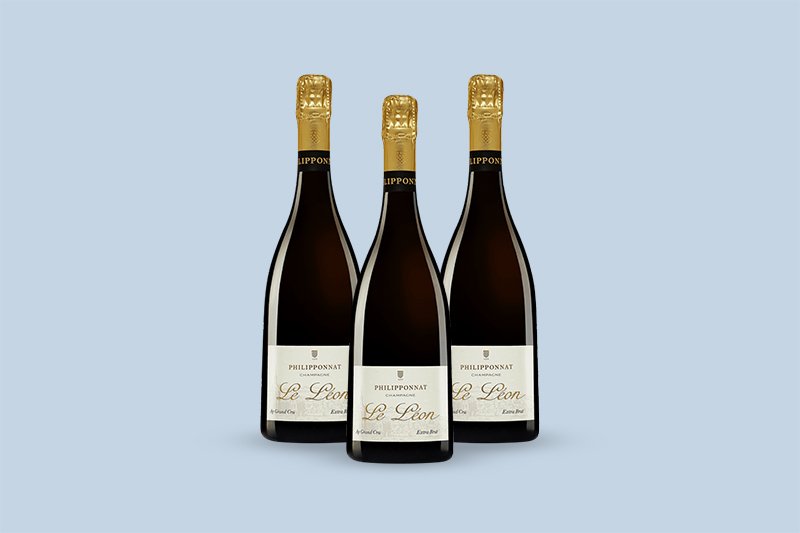
This exceptional wine is intense and acidic, with an attractive nose of caramel, grilled nut, and oak. Grapefruit and lemon glaze flavors give way to a long, creamy finish. It goes best with white meat dishes and cheese platters.
Price of Philipponnat Le Leon Grand Cru Extra Brut, 2006: $151
6. Philipponnat Mareuil-Sur-Ay Extra Brut, 2008
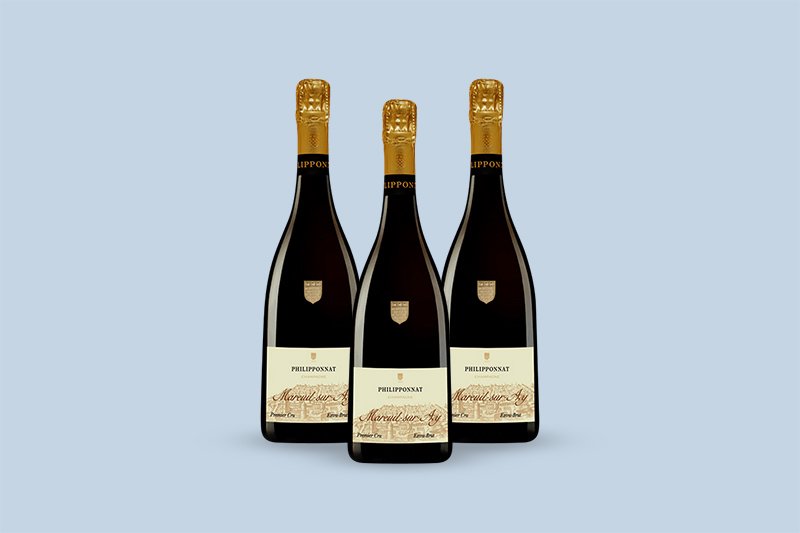
This is a triumphant vintage for Philipponnat. It's a fine wine with a creamy texture and a peach aroma. You can taste generous citrus and green apple flavors on the palate with pepper and cumin notes.
Price of Philipponnat Mareuil-Sur-Ay Extra Brut, 2008: $151
7. Philipponnat Blanc de Noirs Brut with Decanter Set, NV
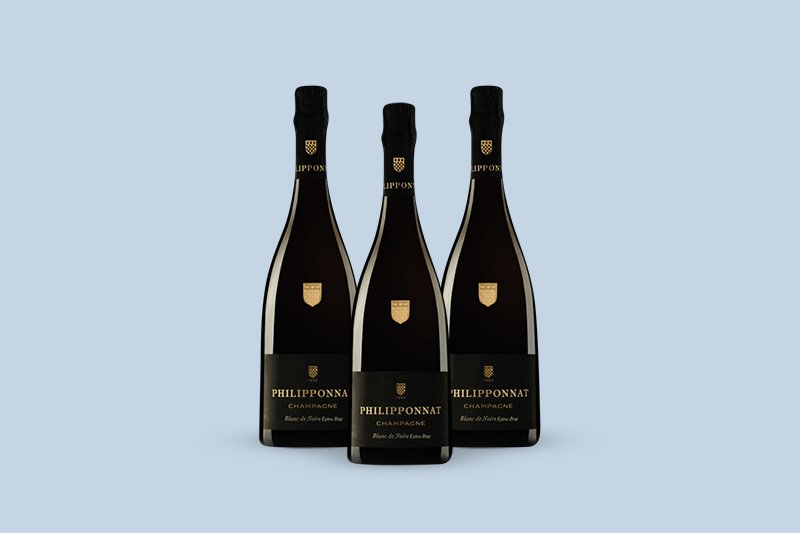
This non vintage Champagne has a deep golden color with a delicate foam. The nose reveals light vine blossom and toasted bread notes leading to a summer berry and citrus aroma. It’s the perfect combination of ripeness and minerality.
Price of Philipponnat Blanc de Noirs Brut Champagne with Decanter Set, NV: $142
8. Philipponnat La Remissonne Premier Cru Extra Brut, 2009

This bright golden wine greets you with a smoky, citrusy aroma before ending on a peppery note. It’s smooth on the palate with hazelnut and almond flavors. This vintage pairs marvelously with seafood dishes and venison.
Price of Philipponnat La Remissonne Premier Cru Extra Brut, 2009: $128
9. Philipponnat Cuvee 1522 Premier Cru Brut Rose Millesime, 2002
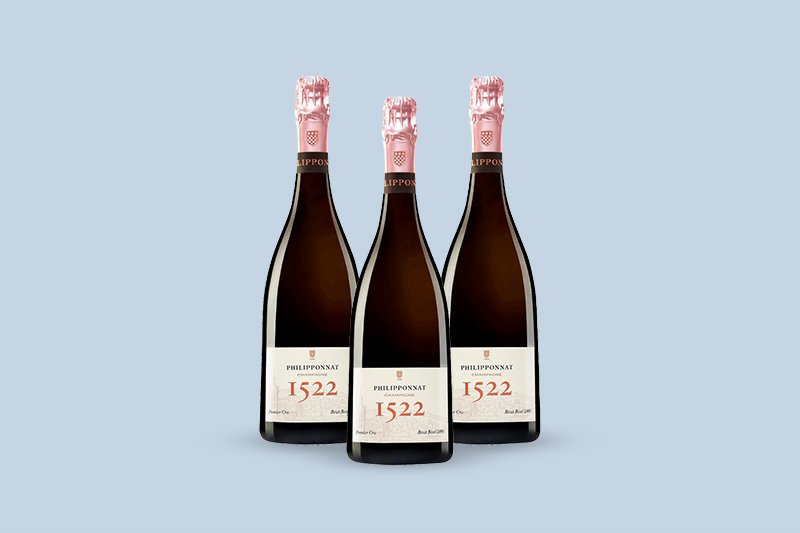
Here we have a full-bodied vintage imbued with incredible sweet almond, redcurrant, and lemon glaze flavors. It's a fresh and concentrated wine that envelopes you with spicy notes typical of the Ay terroir. Due to its dryness, this wine pairs well with grilled fish and contrasts beautifully with poultry.
Price of Philipponnat Cuvee 1522 Premier Cru Brut Rose Millesime, 2002: $136
10. Philipponnat Cuvee 1522 Grand Cru Extra Brut Millesime, 2005
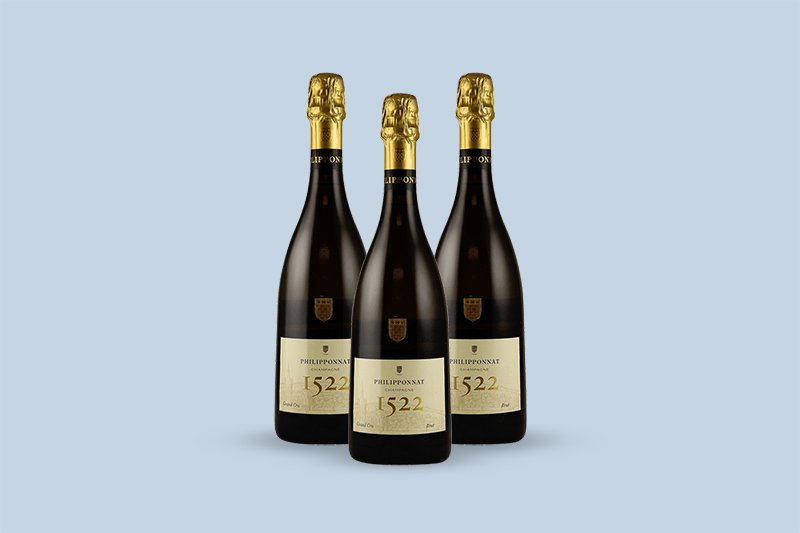
This superb cuvee exhibits freshness and spiciness on the palate. The bouquet reveals concentrated aromas of dried cranberry and red fruit jellies. This wine displays Philipponnat’s signature chalky texture and mineral finish.
Price of Philipponnat Cuvee 1522 Grand Cru Extra Brut Millesime, 2005: $175
Should You Invest in Philipponnat Wines?
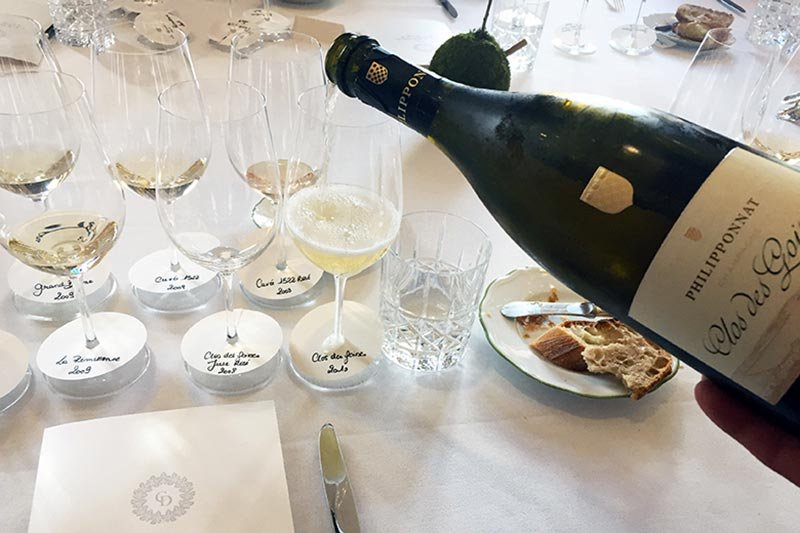
Philipponnat produces each wine in limited quantities, including the famous Champagne Clos de Goisses.
Philipponnat’s rarity also drives its price up, particularly amongst the older wines:
- The value of a 1964 Philipponnat Clos des Goisses Extra Brut bottle surged more than 230% in just one month from $964 in October 2020 to $3,275 in November 2020.
- A bottle of 1966 Philipponnat Reserve Brut Millesime went up by 50% from $189 in 2019 to $284 in 2020.
The best bottles of Philipponnat are becoming increasingly sought-after, especially at auctions:
- In 2017, Christies sold 6 bottles of Philipponnat Clos des Goisses 1988 for $3,430.
- A case of disgorged Philipponnat Clos des Goisses Brut LV was sold for $16,870 at a Christies’ online auction in 2019. The case included bottles from the 1978, 1979, 1980, 1982, 1986, 1991, 1996 vintages.
The Clos des Goisses vintage makes for a great single-vineyard Champagne investment at attractive prices. It also has an excellent aging potential of 20 years or more.
So, how can you buy a bottle of Philipponnat? After all, you probably won’t find the best vintages in your neighborhood wine store.
Thankfully, you can get the best bottles of Philipponnat and other investment-grade wines easily through Vinovest.
Let’s see how that works.
Invest in Philipponnat and Other Fine Wines through Vinovest
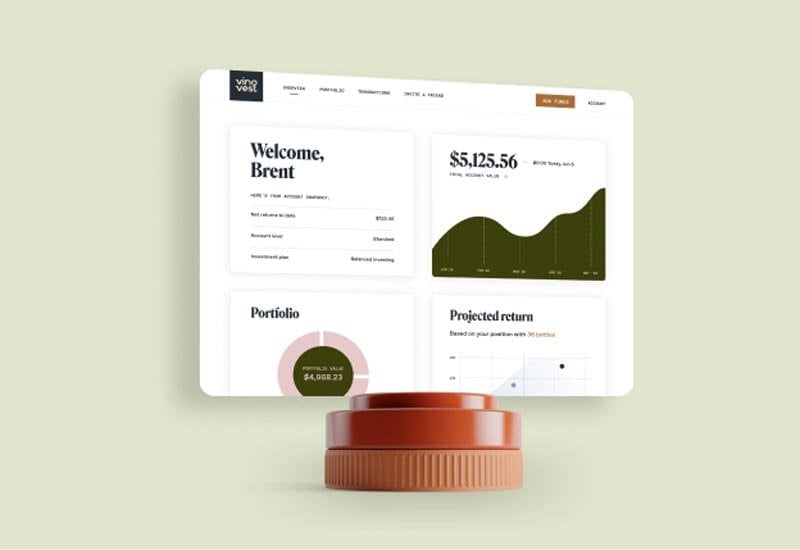
Vinovestis a leading wine investment platform that provides the simplest way to source, manage and expand your portfolio of investment-grade wines.
How it Works
The process is simple:
- Sign up
- Complete a short questionnaire so Vinovest can understand your investment preferences and style.
- Deposit a minimum of $1,000 into your account.
- Begin building your wine investment portfolio and watch it grow.
1. Easily Buy and Sell The Best Wines
Vinovest’s Artificial Intelligence-based online platform lets you easily buy and sell the finest and rarest Philipponnat wines and others. So, you can buy the best bottles with just a few clicks of your mouse.
2. Best Prices
Buy investment-grade wines at the best prices without middlemen and retailer markups.
3. Low Overall Costs, including Tax Advantages
Vinovest charges lower fees than most wine investment firms - a 2.85% annual fee (or 2.5% for a portfolio of more than $50,000). The fee covers wine buying, fraud detecting, storage, insurance, and selling as well as management of your portfolio.
The bonded warehouse facilities don’t charge any excise duty or VAT, allowing Vinovest to pass significant tax advantages on to you.
4. An Expertly Curated Portfolio by a Wine Advisory Team
Vinovest's team of world-class sommeliers and data scientists can help you build a portfolio of investment-grade wines.
They also know which wines can command the highest prices. So when there’s another record-breaking auction, you’ll reap the benefits.
5. Provenance and Authenticity
Vinovest goes the extra mile to trace your wine’s provenance and ensure its authenticity.
6. Optimal Storage
Vinovest stores your wines in bonded warehouses located strategically in France, the UK, Switzerland, and other global wine industry hotspots.
Your wines will be stored under optimal light, humidity, and temperature conditions, protecting their long-term value.
7. Comprehensive Insurance and Security
Your wine cases will be monitored by security cameras 24/7. All warehouses have back-up power generators in case of an unexpected power cut.
Vinovest also offers you a full insurance policy at market value, protecting each bottle against breakage, theft, and loss.
8. Easy Delivery
Sure, you can get the vintage wine you just bought through Vinovest and enjoy it, or you can sell it for a profit. You just need to tell Vinovest when and where to ship the wine, and they'll handle the delivery and insurance for you.
Add An Iconic Champagne To Your Cellar
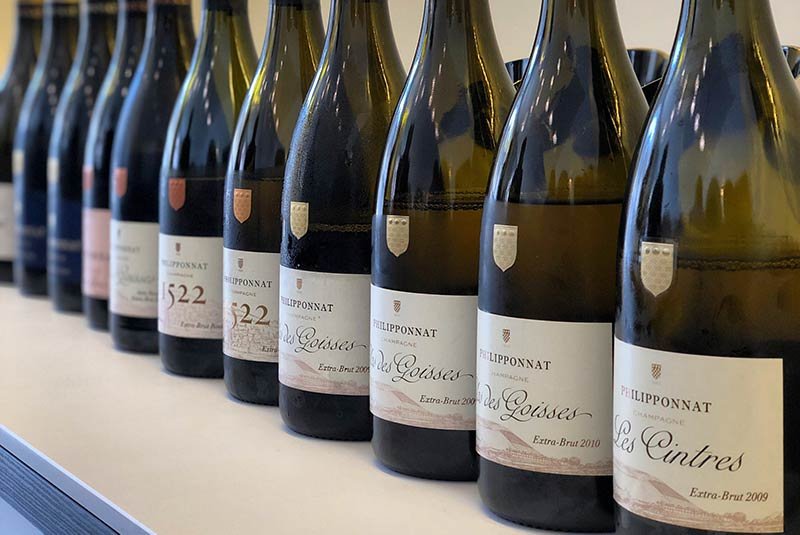
Philipponnat Champagnes are fresh and spicy with a minerality that’s indicative of the famous Ay terroir. The most famous cuvee, Clos de Goisses, is made in relatively small quantities (for a Champagne), making it a highly desirable collectible.
If you’re looking for a bottle of Philipponnat to add to your cellar, Vinovest can help you.
Sign up to buy Philipponnat and other investment wines, and start building an enviable wine portfolio today!
